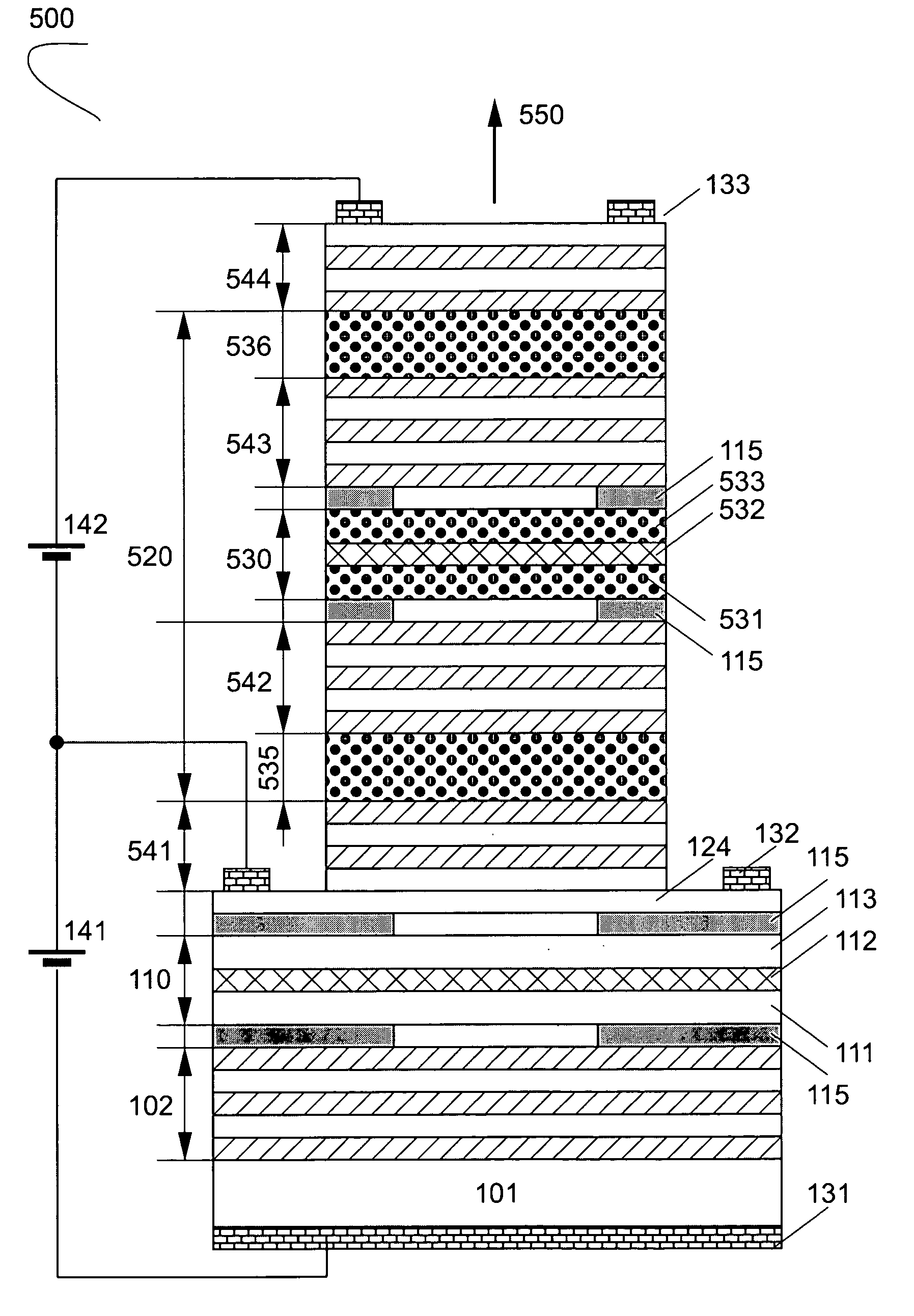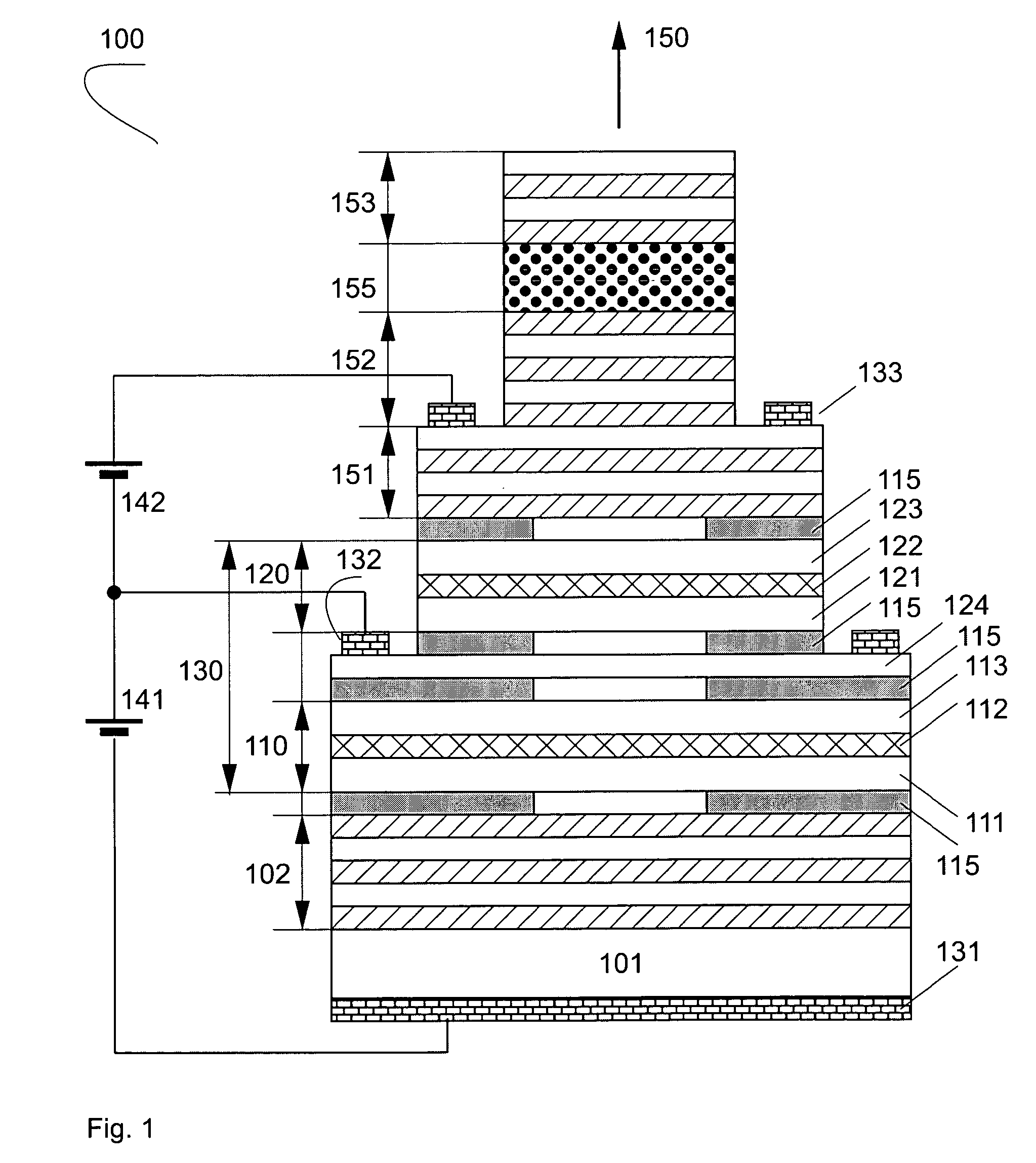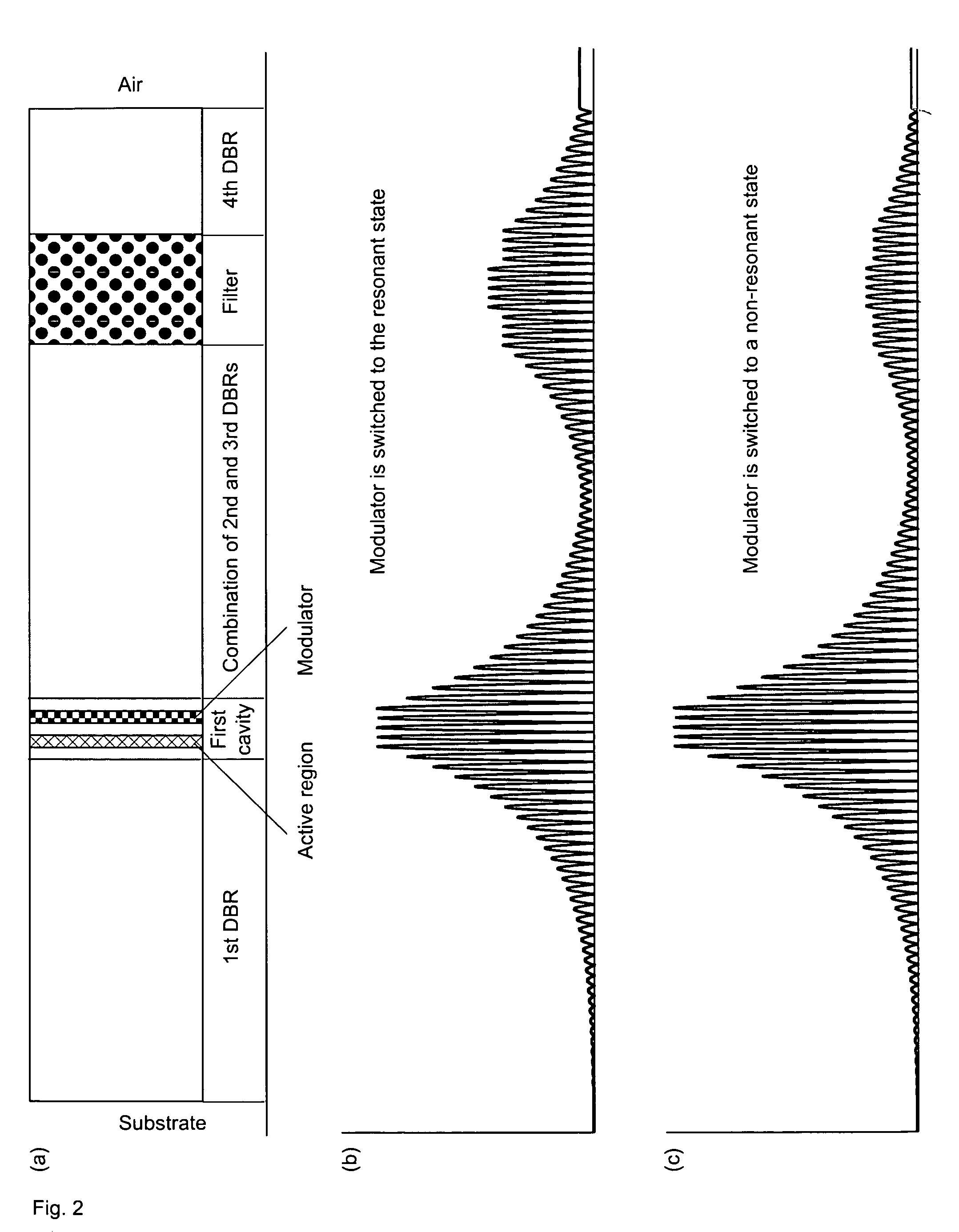Electrooptically wavelength-tunable resonant cavity optoelectronic device for high-speed data transfer
a resonant cavity and optoelectronic technology, applied in the field of semiconductor devices, can solve the problems of parasitic capacitance and inductance, high cost and precise processing tolerance, and inability to operate at very high current and dissipated power density, and achieve the effect of modulating the transmittance of the system
- Summary
- Abstract
- Description
- Claims
- Application Information
AI Technical Summary
Benefits of technology
Problems solved by technology
Method used
Image
Examples
Embodiment Construction
[0049]The present invention provides an ultrafast way to modulate the intensity already at the exit of an optoelectronic device.
[0050]FIG. 1 shows schematically an electronically wavelength tunable vertical cavity surface emitting laser, where the modulation of the wavelength is transformed into the modulation of the intensity of the output laser light. The device 100 includes a substrate 101, a first distributed Bragg reflector 102, a cavity 130, a second distributed Bragg reflector 151, a third distributed Bragg reflector 152, a filter 155, and a fourth distributed Bragg reflector 153. The cavity 130 includes a light generating element 110, and a modulating element 120.
[0051]The part of the device 100, including the substrate 101, the first distributed Bragg reflector 102, the light generating element 110, the modulating element 120, and the second distributed Bragg reflector 151, is a wavelength tunable vertical cavity surface emitting laser as disclosed in U.S. Pat. No. 6,611,53...
PUM
 Login to View More
Login to View More Abstract
Description
Claims
Application Information
 Login to View More
Login to View More - R&D
- Intellectual Property
- Life Sciences
- Materials
- Tech Scout
- Unparalleled Data Quality
- Higher Quality Content
- 60% Fewer Hallucinations
Browse by: Latest US Patents, China's latest patents, Technical Efficacy Thesaurus, Application Domain, Technology Topic, Popular Technical Reports.
© 2025 PatSnap. All rights reserved.Legal|Privacy policy|Modern Slavery Act Transparency Statement|Sitemap|About US| Contact US: help@patsnap.com



